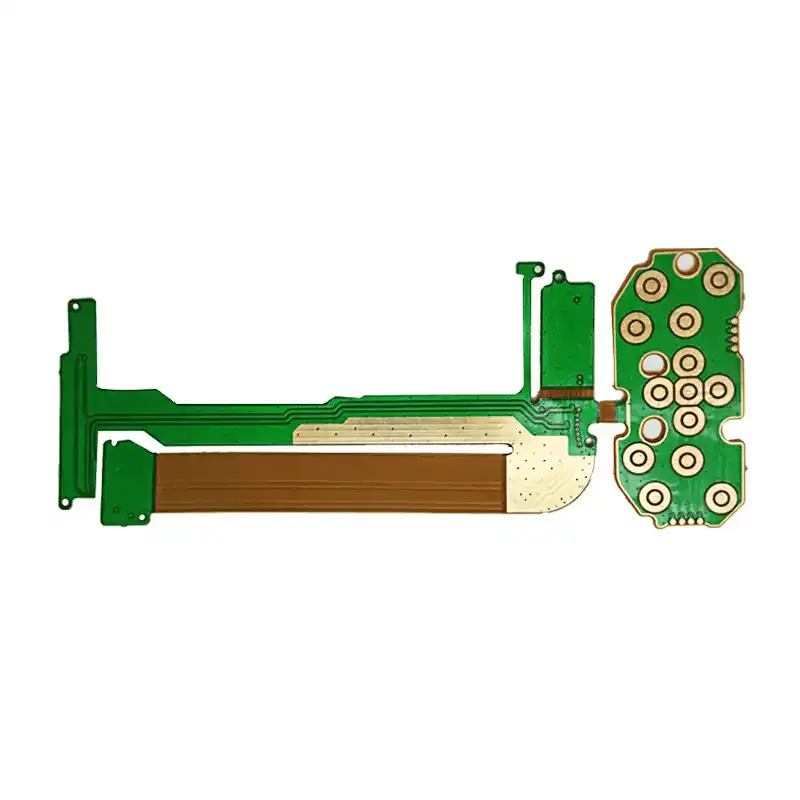Manufacturing Rigid-flex PCB Boards
Rigid-flex PCB Prototype | Rigid-flex PCB Fabrication | High-end Quality Standards | Quick Delivery | Pre-sale and After-sale services
Request A Free Quote
The Rigid-flex PCB
Combines the Benefits of Both Conventional PCB and Flex Circuit Board
There have been many advances and changes in PCBs, and new developments continue to take place. As technology improves, it overcomes challenges and offers more accurate and reliable performance. It is common for PCBs to be rigid, but they cannot be utilized in every device, especially compact ones. That’s how rigid-flex boards come out in market to solve suck issues. In common electronic products, especially mobile phones and laptops, they became common after they were first used in spacecrafts. In reality, it brings together the advantages of rigid and flexible PCBs. By using computer-controlled and latest technology, Rigid-Flex PCBs can be perfectly designed and manufactured at our factory.
What Is Rigid-Flex PCB?
In common words, combining flexible board technology with rigid board technology results in rigid-flex printed circuit boards. As rigid-flex boards are designed in a 3D space, they offer greater spatial efficiency. They can also be more challenging than typical rigid design environments. Due to rigid flex’s three-dimensional capabilities, designers are able to twist, fold, and roll flexible board substrates in order to modify the shape for a particular application. Rigid-flex PCB boards are ideal for anyone who needs the flexibility of a soft surface but the durability of a rigid one. With rigid planar surfaces and flexible connections, rigid-flex PCB boards have all the strengths of both types. Read on to find out why they’re becoming increasingly popular within industries that require flexibility, durability, or both!
A Rigid-Flex PCB board is a thin and flexible material like paper, but it has conductive lines that can function as traces in an electronic circuit. These boards are highly specialized and often only made by specialty companies due to the manufacturing process. Rigid-flex boards can provide some interesting advantages and benefits in certain applications. With advances in technology we now have a procedure that is quick and easy as well as inexpensive. It can also be made as creative as you want to be.

Higher Component Density

Higher Quality Control

Longer Life Span
What Are The Advantages Of Rigid-Flex PCB?
Rigid-flex PCB boards are becoming more popular these days due to its advantages over other options. Rigid-Flex boards are flexible, but rigid enough that they can be handled without any issues. These boards are also more reliable than the traditional ones, as it is barely possible for them to bend or bow during assembly. Flexible Rigid-Flexes are even better because they remove the need of having bond wires since the board will be able to bend without breaking apart.
1. Cost-effective
In Rigid-Flex PCBs, there is no need for connectors and cable assemblies. Therefore, there is more space available on the board, and there are fewer things required. Because of fewer parts, the PCB is not only compact, but it is also lightweight. Moreover, due to fewer components, the cost is reduced.
2. Light-weight
Because of their flexibility and rigidity, PCBs can be used in a variety of devices. Rigid PCBs are ideal for large, flat electronic products such as computers or televisions because they provide stability and support to the device. Flexible PCBs are best for smaller electronic devices like smartphones and tablets, which need to bend and move freely. Rigid and flex PCBs are combined in a way that allows the PCB to bend itself according to available space. This helps save space. In the case of rigid PCBs, rigid-Flex PCB manufacturers have to consider the size of the PCB before designing them because they tend to be larger than other types.
What Are The Disadvantages Of Rigid-flex PCB?
Rigid-flex PCB boards come with disadvantages, as well as many advantages. One of the biggest negatives is that they are more expensive compared to other rigid circuit boards, which is because they require a lot more time and effort to manufacture.
Work With Us
Rigid-flex printed circuit boards offer a higher level of flexibility for product design changes and can be produced without costly upfront investments. They are typically made from multi-layer laminated FR-4 glass epoxy board that is unlike traditional soft boards. They also allow one to use fine line patterns for improved signal performance and superior wave soldering characteristics.
Rigid-flex PCB boards are two types of circuit boards used for many purposes. Rigid-flex circuits are usually made with one or more layers of fiberglass that act as the board’s stiffener, while flexible circuits are made without this reinforced material.

 EN
EN
 RU
RU




